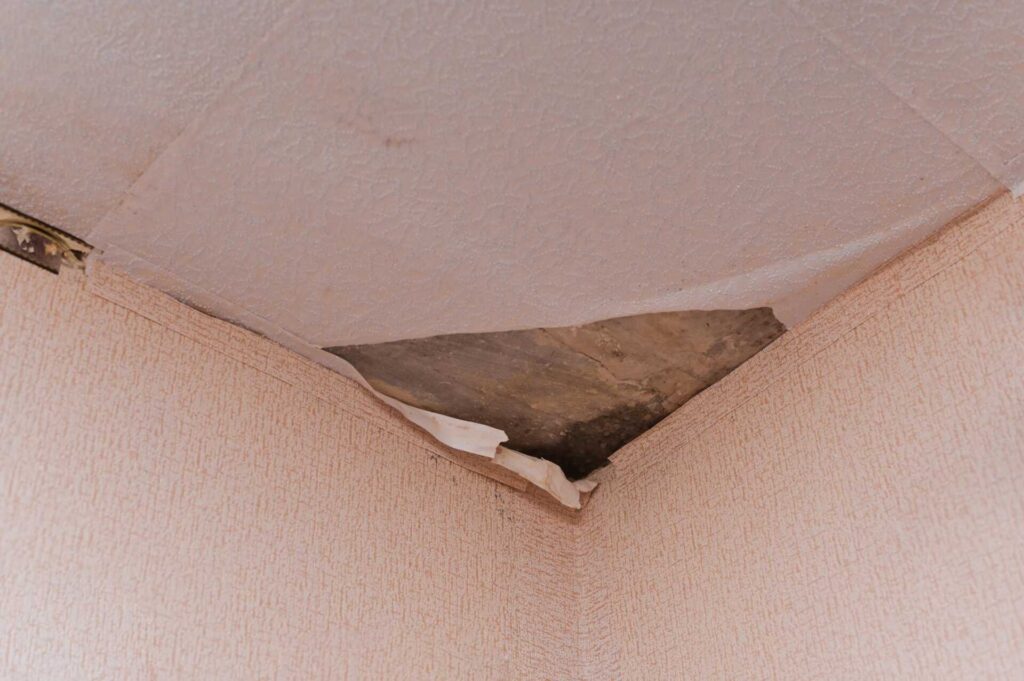
Contents
Mold can quickly become a serious issue if not addressed promptly, particularly after water damage. You need to act fast—within 24-48 hours—to prevent extensive growth. Understanding the steps involved in effective mold removal is vital. From selecting the right equipment to knowing when to call in professionals, each decision impacts your home’s safety. But how do you ensure you’re taking the right steps to protect your living environment? Let’s explore the essential techniques.
Key Takeaways
- Act quickly to remove standing water and reduce humidity within 24-48 hours to prevent mold growth.
- Utilize high-capacity wet/dry vacuums and dehumidifiers for effective water extraction and moisture control.
- Clean surfaces with water and detergent or a bleach solution to kill mold spores effectively.
- Inspect for hidden moisture using moisture meters and conduct air quality tests to assess mold presence.
- Engage professional mold remediation services for safe, thorough removal and long-term solutions to prevent future growth.
Understanding Mold Growth After Flooding
When a flood occurs, understanding mold growth is vital to preventing serious health issues and property damage. Mold thrives in damp environments, particularly when moisture levels exceed 60%.
After a flood, it can begin to grow within 24 to 48 hours if conditions remain favorable. You need to be aware that mold spores are everywhere; they can latch onto various surfaces, including wood, drywall, and fabrics.
The key factors influencing mold development include temperature, humidity, and ventilation. Maintaining a temperature between 70°F and 80°F, combined with adequate airflow, can limit mold growth.
Regularly checking for hidden moisture in areas like basements, attics, and behind walls is essential. If you spot mold, act quickly; the longer it remains untreated, the more extensive the damage will be.
Importance of Immediate Water Extraction
When water accumulates in your home, acting quickly to extract it can prevent mold growth and minimize structural damage.
Mold thrives in damp environments, so immediate removal of excess moisture is essential to maintaining a healthy living space.
Preventing Mold Growth
Although water damage can occur unexpectedly, addressing it promptly is essential to preventing mold growth. By quickly extracting water, you minimize the moisture that mold thrives on. It’s vital to act within 24-48 hours to avoid extensive contamination.
Here’s a quick guide to help you understand the steps:
| Action | Timeframe | Importance |
|---|---|---|
| Inspect the area | Immediately | Identify the source of moisture |
| Extract water | Within 24 hours | Reduce mold risk |
| Dry the area | Within 48 hours | Prevent mold spores from settling |
Minimizing Structural Damage
Immediate water extraction is essential for preventing mold growth and minimizing structural damage to your property.
When water infiltrates your home, it weakens materials like wood, drywall, and insulation. If you don’t act quickly, this can lead to costly repairs and compromise your safety.
Start by identifying the source of the water and address it immediately. Use pumps and wet vacs to remove standing water and dehumidifiers to reduce moisture levels. Ensure proper ventilation to facilitate drying.
Essential Equipment for Water Removal
To effectively tackle water removal, having the right equipment is essential for preventing mold growth and minimizing damage.
First, a high-capacity wet/dry vacuum is important for extracting standing water quickly. This tool can handle various surfaces, making it versatile for different areas of your home.
Next, consider investing in dehumidifiers; they help reduce humidity levels, which is critical in preventing mold spores from thriving.
Additionally, fans can aid in drying out moisture-laden areas, enhancing airflow and speeding up the drying process.
Don’t forget protective gear, like gloves and masks, to keep you safe while working.
Finally, moisture meters can help you identify hidden damp spots, ensuring you address all water issues thoroughly.
Step-by-Step Water Extraction Process
Once you’ve gathered your essential equipment, you can begin the water extraction process with a systematic approach.
First, verify your safety by wearing gloves and a mask to protect against potential contaminants.
Next, remove any standing water using a wet/dry vacuum. Start at the farthest corner of the affected area and work your way toward the exit, verifying you don’t miss any spots.
Once you’ve extracted visible water, use fans and dehumidifiers to dry out the space thoroughly. Aim for a humidity level below 60% to prevent mold regrowth.
Monitor the area for moisture, checking behind walls and in hidden corners.
Finally, dispose of any damaged materials that can’t be dried effectively, such as soaked carpets or drywall.
This proactive approach helps eliminate water and sets a solid foundation for the next steps in mold remediation, fostering a healthier living environment for you and your family.
Assessing Mold Contamination Levels
To effectively address mold issues, you first need to identify the types of mold present in your environment.
Next, measuring the severity of contamination will guide your remediation efforts.
Utilizing visual inspection techniques will help you assess the extent of the problem accurately.
Identifying Mold Types
Mold identification is essential for evaluating contamination levels in your environment. Start by observing the color and texture of the mold, as different types can indicate varying health risks.
Common molds include Aspergillus, which appears green or black, and can affect respiratory health, while Penicillium is often blue or green and can trigger allergies. You might also encounter Stachybotrys, known as black mold, notorious for its toxicity.
Use a magnifying glass to examine spores and look for signs of moisture, as mold thrives in damp areas. If you’re uncertain, consider using mold testing kits or consulting professionals.
Understanding these types will empower you to take the necessary steps to protect your space and health.
Measuring Contamination Severity
How can you accurately measure the severity of mold contamination in your environment? Start by evaluating the affected areas for visible mold growth and dampness.
Use a moisture meter to check humidity levels, as elevated moisture often indicates potential mold problems.
Next, consider air quality testing; mold spores can circulate in the air, posing health risks. Testing kits are available to collect samples for laboratory analysis, providing insight into the specific types and levels of mold present.
Additionally, you can evaluate any associated health symptoms in yourself and others.
Visual Inspection Techniques
Evaluating the severity of mold contamination often starts with a thorough visual inspection of your environment.
Begin by checking areas prone to moisture, like bathrooms, kitchens, and basements. Look for discoloration on walls, ceilings, or floors, which may indicate mold growth. Pay attention to musty odors, as they often signal hidden mold.
Use a flashlight to inspect dark corners, behind appliances, and under sinks where mold may thrive unnoticed. Don’t forget to examine ventilation systems for any signs of contamination.
If you spot mold, assess its size; small patches can often be managed, while larger infestations may require professional help. Document your findings to guide effective removal and ensure a healthier living space for you and your loved ones.
Effective Cleaning Solutions for Mold
When dealing with mold, effective cleaning solutions play an essential role in restoring a healthy environment. Start by using a mixture of water and detergent, which can remove surface mold effectively.
For tougher infestations, consider a solution of one cup of bleach to one gallon of water. This kills mold spores and disinfects the area.
Vinegar is another natural alternative; its acidity can eliminate most types of mold. Simply spray it on the affected surface and let it sit for an hour before scrubbing.
After applying any solution, make sure you scrub the area thoroughly with a brush to dislodge mold from surfaces.
Don’t forget to wear gloves and a mask to protect yourself during the process.
Proper Drying Techniques to Prevent Mold
After effectively cleaning mold, it’s crucial to focus on proper drying techniques to prevent its return. First, adequate ventilation should be ensured by opening windows and using fans to circulate air. This reduces humidity levels, which mold thrives on.
Next, use dehumidifiers in damp areas, like basements or bathrooms, to further control moisture.
You should also inspect any materials that were wet, like carpets or drywall. If they’re still damp after cleaning, consider removing them, as they can harbor mold spores. For fabrics, use a dryer on a high heat setting, making sure they’re completely dry.
Lastly, aim to maintain indoor humidity levels below 60% by regularly monitoring and using air conditioning during humid months. By adopting these drying techniques, you greatly reduce the risk of mold returning, creating a healthier living environment for you and your loved ones.
Professional Mold Remediation Services
While some mold issues can be tackled independently, engaging professional mold remediation services often proves vital for extensive and effective treatment.
These experts have the training and equipment necessary to address mold problems thoroughly, ensuring your home is safe and healthy.
Here are some key benefits of professional services:
Expert Assessment: They can accurately identify mold types and sources, which is important for effective removal.
Advanced Techniques: Professionals utilize specialized tools and methods that you mightn’t have access to, ensuring a deeper clean.
Health Safety: They know how to handle mold safely, reducing the risk of exposure and health complications.
Long-Term Solutions: Professionals can offer strategies to prevent future mold growth, giving you peace of mind.
Involving experts removes mold and helps foster a healthier living environment for you and your loved ones.
Preventative Measures to Avoid Future Mold Issues
To effectively prevent future mold issues, it’s crucial to understand the conditions that promote its growth. Mold thrives in damp, humid environments, so controlling moisture is your first line of defense.
Start by fixing leaks in roofs, walls, and plumbing to eliminate water sources. Then, use exhaust fans and open windows to ensure proper ventilation in areas like bathrooms and kitchens.
Regularly inspecting your home for signs of moisture and mold can help catch issues early. Use dehumidifiers in basements or other humid areas to maintain indoor humidity levels below 60%.
Additionally, consider using mold-resistant products when renovating or building, such as mold-resistant drywall and paints.
Regular cleaning with mold-inhibiting solutions can also deter growth. By taking these proactive measures, you create a healthier living environment for yourself and your loved ones, fostering a sense of security and belonging in your home.
Review
Tackling mold effectively requires immediate action and the right tools. By quickly extracting water and thoroughly drying affected areas, you can greatly reduce the risk of mold growth. While DIY methods can be effective, understanding the severity of contamination is essential. If you’re facing extensive mold issues, don’t hesitate to seek professional help. Remember, consistent preventative measures protect your home and your health, ensuring mold doesn’t ruin your life.
Recent Posts
Why Choose Professional Water Extraction and Mold Cleanup?
When faced with water damage, you can’t afford to overlook the risks of mold growth.
What Are Emergency Water Extraction Services?
Water damage can strike unexpectedly, yet the right emergency water extraction services can make a
Affordable Mold Removal Services for Businesses
Did you know that mold can silently undermine your business’s health and safety standards? Ignoring
